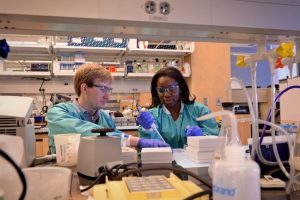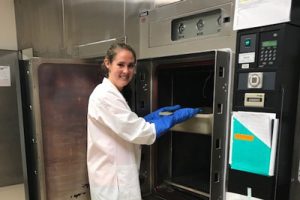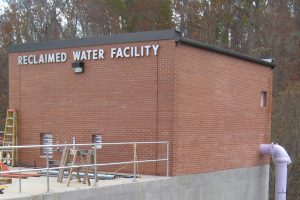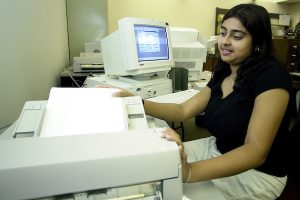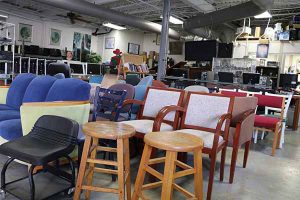Sustainability in UNC’s Labs
Carolina: A National Leader in Research & Sustainable Lab Operations
Each year, scientists at the University of North Carolina at Chapel Hill oversee more than $1 billion worth of research activity, solidifying Carolina’s prominence as one of the top research universities in the nation.
With over 1.3 million square feet of lab space, UNC research drives innovation and fosters a creative environment where the world’s top scientists collaborate to solve problems, discover new technologies, and save lives. Laboratories are also the largest consumers of energy, the third largest consumers of water, and produce some of the most challenging waste to divert from the landfill on UNC’s campus.
UNC Green Labs Committee’s mission is to to encourage sustainable practices and promote awareness of green issues in UNC’s laboratories. As a member of the Carolina community, UNC Green Labs is dedicated to reaching UNC’s Three Zeros goals: net zero water use, zero waste to landfills, and net zero greenhouse gas emissions.
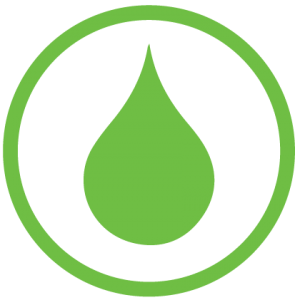 |
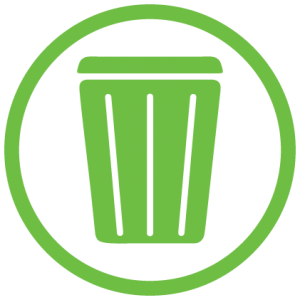 |
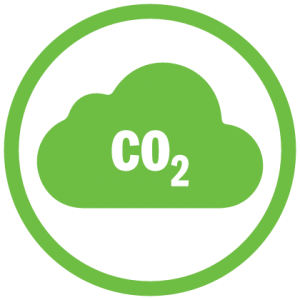 |
We collaborate with Sustainable Carolina, the Office of Waste Reduction and Recycling, and Energy Management to monitor and assess the impact of our programs on UNC’s energy, waste, and water footprints.
Water Use Intensity in Carolina’s Labs
Laboratories and residence halls are the largest water uses overall.
In 2016, the top five water consuming buildings were the Neuroscience Research Building, Genetic Medicine Research, MBRB, Thurston-Bowles, and Lineberger Comprehensive Cancer Center.
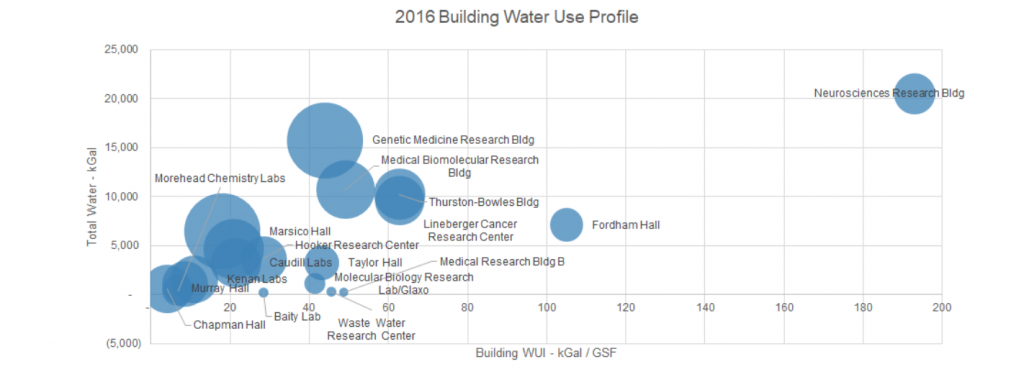
Labs require water for sterilization, distillation, vacuum generation, glass washing, and other specialized purposes. In many instances, water-intensive equipment runs constantly every day of the year. The water used in cage-washers, dishwashers, and water-treatment equipment all adds up.
PROGRESS:
- Sterilizer Retrofits
- UNC Green Labs Best Practices Guide
- Reclaimed Water System
Lab Waste at Carolina
In 2017, UNC’s Office of Waste Reduction and Recycling conducted a waste characterization study in Carolina’s labs to better understand the composition of waste sent to the landfill.
Waste at UNC has three potential designations: compostable, recyclable, or landfill. This study characterized waste sent to the landfill to determine the presence or absence of recyclable and compostable waste items in the landfill waste stream.
The study showed that the majority of waste sent to the landfill from labs could have been composted, 14% of the designated landfill waste could have been recycled in the existing recycling systems at Carolina, and another 6% could be recycled if UNC added more recyclable materials to our recycling collection.
Only one fourth of what UNC’s labs sent to the landfill was actually trash.
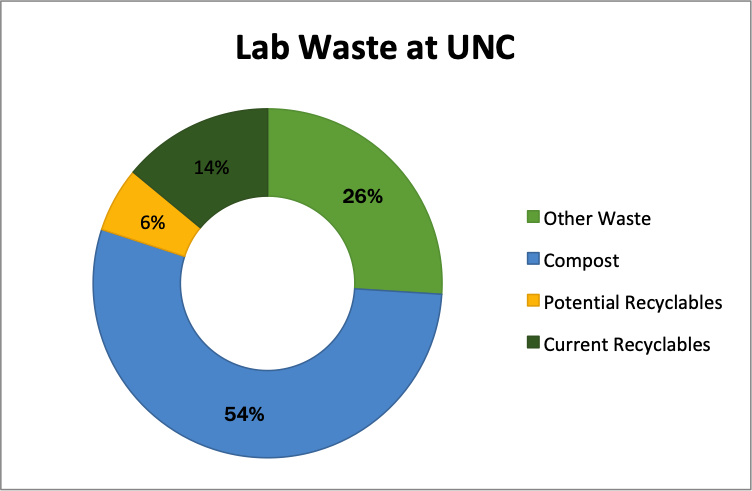
PROGRESS:
Energy Use Intensity in Carolina’s Labs
Research facilities are the largest energy consumers at Carolina.
In 2016, the top six energy-consuming buildings on campus were: Genetic Medicine Research Building, Marsico Hall, MBRB, Thurston-Bowles, and Lineberger Comprehensive Cancer Center.
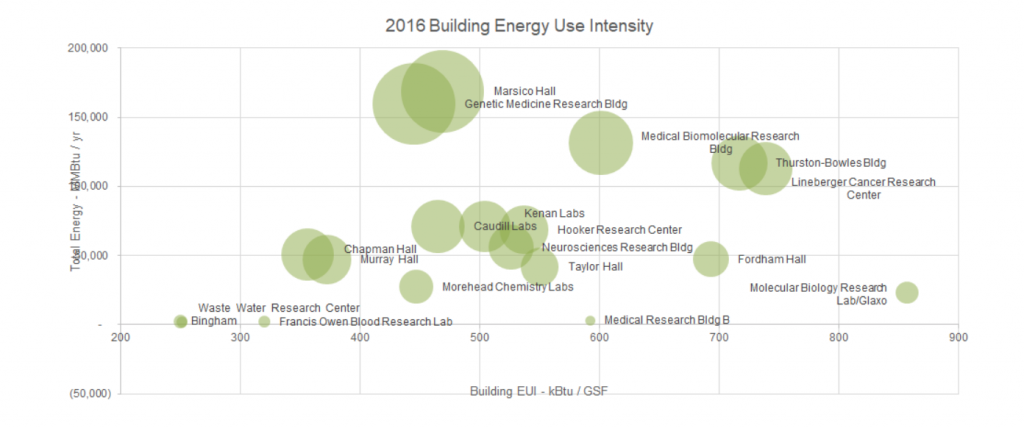
Labs use a lot of energy to run specialized equipment and store samples. In one year, a fume hood can use the same amount of energy as four American households, one -80˚C Freezer can use enough energy to power a small house, and an idling 4˚C refrigerated floor centrifuge can use the same amount of energy as two constantly playing flat-screen TVs.
Add these high-energy pieces of equipment to the lab’s lights, drying ovens, vacuum pumps, heat blocks, water baths, computers, microscopes, pH meters, and other equipment: lab energy consumption can really add up.
PROGRESS:
- Shut the Sash
- Air Flow Reduction Projects in Campus Labs
- RESPC’s Efficient Freezer Rebate Program
- UNC Freezer Challenge
- Green Lab’s Best Practices Guide
Saving Energy, Water, and Materials in Carolina’s Labs
|
|
|
|
|

